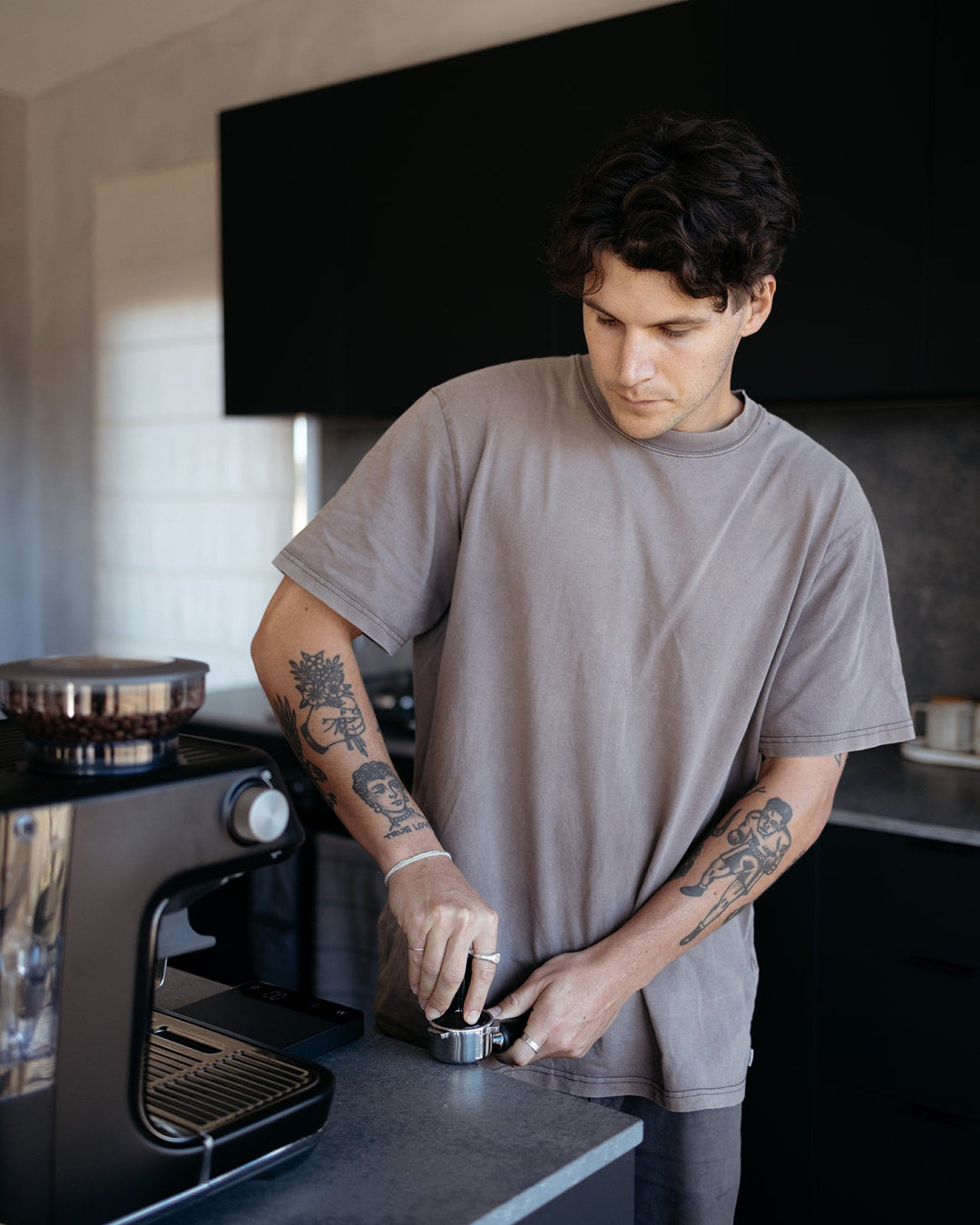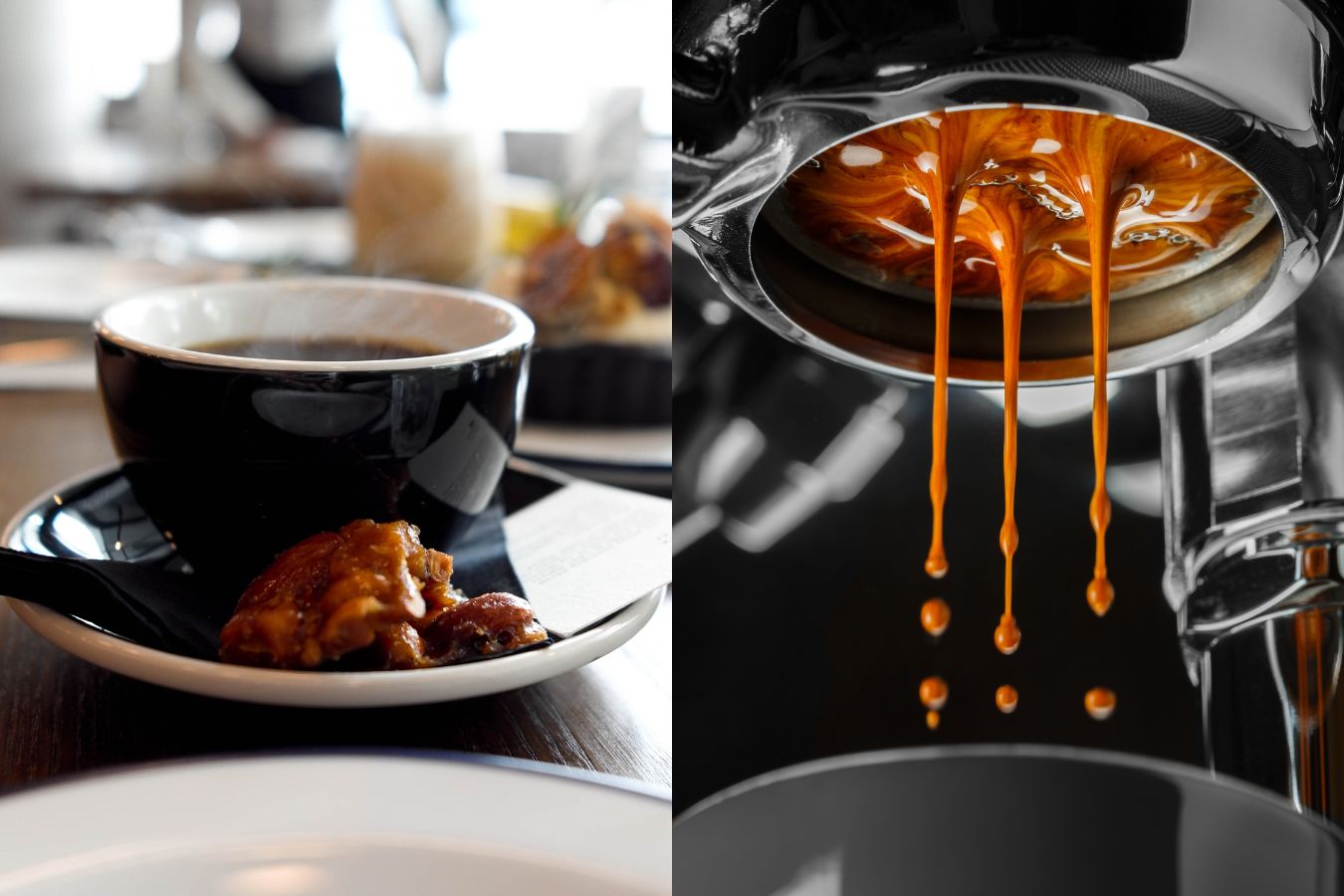Recognizing Coffee Beans: the Journey From Espresso to Blended Coffee Beans

The Beginnings of Coffee: A Worldwide Perspective
While you could think of coffee as a contemporary staple, its beginnings trace back centuries, intertwining with societies throughout the world. The story begins in Ethiopia, where legend says a goat herder named Kaldi discovered the invigorating results of coffee beans after observing his goats frolicking energetically after consuming them.
As profession routes broadened, coffee made its method to Europe in the 17th century, swiftly acquiring popularity. It changed from a magical drink right into a daily ritual, inspiring gatherings and intellectual exchanges. Each culture added its one-of-a-kind twist to coffee preparation, enhancing its history. This worldwide journey highlights just how coffee links us, going beyond borders and joining varied customs through a simple bean.
Cultivation and Harvesting of Coffee Beans
As coffee's journey advanced, the emphasis changed to the growing and harvesting of certain bean ranges, especially those utilized for coffee. You'll find that espresso beans usually originate from Arabica or Robusta plants, each offering distinct flavors. The perfect expanding conditions include high elevations and rich, well-drained dirt, which improve the beans' top quality.
Throughout the harvest, selecting techniques differ. Timing is essential; you want to harvest when the cherries reach peak perfection for optimum taste.
When collected, the beans are planned for processing, which is essential in identifying their final taste. Recognizing the cultivation and gathering procedures offers you understanding right into what goes right into your favored espresso, enriching your gratitude for every mug.
Handling Approaches: From Cherry to Bean
Currently that you have actually learnt more about collecting coffee beans, let's check out just how those cherries transform into the coffee beans you enjoy. You'll see how various harvesting methods influence flavor, adhered to by the necessary actions of fermentation and drying. We'll break down the milling and grading process that establishes your coffee's quality.
Harvesting Strategies Explained
When it involves coffee, recognizing harvesting strategies is vital, given that they directly affect the taste and high quality of the beans you appreciate. There are two main approaches: discerning picking and strip selecting. Discerning picking includes hand-picking just ripe cherries, guaranteeing you get the best quality beans. This approach commonly results in a richer taste account, though it's even more labor-intensive. On the other hand, strip picking ways gathering all cherries simultaneously, despite perfection. While it's quicker and less expensive, this can result in a mix of flavors, impacting the final item. Ultimately, the choice of gathering method can substantially influence your coffee experience, so it deserves recognizing exactly how those beans made it to your mug.
Fermentation and Drying Out
After collecting, the next action in handling coffee beans play a considerable role in shaping their taste. You'll discover that fermentation is essential, as it helps break down the mucilage surrounding the beans, enhancing their preference account. Depending on the approach, this procedure can last from a couple of hours to a number of days, with differing outcomes based upon temperature and humidity.
Sun-drying enables the beans to take in flavors from the atmosphere, while mechanical drying assurances constant wetness degrees regardless of climate. Correct drying out is crucial to prevent mold and protect the beans' high quality, ultimately influencing your cup of coffee.
Milling and Grading Process
As fermentation and drying established the phase for flavor development, the milling and grading process assurances that only the best coffee beans make it to your mug. This phase includes eliminating the outer layers of the coffee cherry, including the parchment and husk. After milling, the beans are arranged by size and weight, making sure a consistent quality. You'll find that grading aids recognize problems and classify beans, which influences taste and aroma. High-grade beans receive a higher quality, leading to a richer coffee experience. As soon as rated, the beans await packaging and shipping, maintaining their unique features. This careful procedure is necessary for supplying the outstanding preference you enjoy in every sip of your favorite mixture.
Roasting Techniques: Unlocking Flavor Prospective
When you roast coffee beans, the technique you select can dramatically impact the taste account. Understanding the relationship between time, temperature, and toasting techniques is essential to exposing the potential of your brew. Let's explore exactly how these components come together to produce the excellent cup.
Roasting Methods Described
While you might think that all coffee toasting methods generate the same results, the reality is that each method reveals distinct flavor possibilities in the beans. Drum toasting makes use of a rotating drum to equally disperse heat, boosting caramelization and generating a balanced flavor. Air roasting, on the various other hand, circulates hot air around the beans, advertising a lighter roast with noticable acidity.

Influence On Flavor Account
Various toasting techniques not only influence the process however likewise greatly affect the flavor account of the coffee beans. Dark roasts, on the various other hand, bring out bold, smoky tastes, sometimes concealing the bean's one-of-a-kind qualities. Recognizing these subtleties assists you appreciate the artistry behind your mug of coffee, boosting your general experience with every sip.
Time and Temperature Level Variables
To release the full flavor capacity of coffee beans, both time and temperature throughout the toasting procedure play considerable roles. When roasting, you'll locate that greater temperature levels can promptly establish flavors, but if you hurry it, you could finish up with burned notes. On the other hand, lower temperatures enable an extra steady taste development, showcasing the beans' distinct features.

Timing is simply as essential; expanding the roast as well long can result in a loss of acidity and brightness, while also brief a roast may leave the beans underdeveloped. Discovering that pleasant place calls for method and testing. By adjusting these elements, you can expose the rich, intricate tastes hidden within each bean, developing an absolutely exceptional coffee experience.
The Art of Mixing: Crafting Special Coffee Profiles

Beginning by selecting a base coffee that gives a strong structure. Select corresponding beans to enhance certain taste notes. As an example, an intense Ethiopian bean can bring fruitiness, while a rich Brazilian coffee includes body. Trial and error is vital-- don't hesitate to adjust ratios till you find your suitable profile.
As you blend, remember that each combination informs a tale. You're not just making coffee; you're developing an experience. Take your time, taste frequently, and delight in the journey of discovering your trademark mix - Single Origin Espresso.
Brewing Methods: Just How Preparation Affects Flavor
Blending coffee opens up a domain name of taste opportunities, however exactly how you brew that mix can substantially affect your final cup. On the various other hand, a pour-over highlights the coffee's clarity and illumination, best for showcasing delicate notes.
Coffee, with its high pressure, produces a concentrated shot that emphasizes sweet taste and crema. If you choose a lighter brew, consider a cool mixture approach; it generates a smooth, less acidic preference.
Eventually, testing is key. Readjusting variables like water temperature level, grind dimension, and brew time can change your coffee's profile. Welcome the art of brewing to discover the tastes concealed in your coffee blends. The right technique can raise your experience to new elevations.
The Future of Coffee: Sustainability and Innovation
As the coffee sector evolves, sustainability and technology are ending up being important for addressing environmental obstacles and conference consumer demands. You'll see that more coffee companies are embracing green practices, from sourcing beans fairly to implementing lasting farming strategies. These shifts not only assist the world yet also improve the high quality of the coffee you delight in.
You may see developments like naturally degradable product packaging and water-saving developing approaches that lower waste. Advanced technology, such as blockchain, is likewise ending up being preferred, making certain openness in the supply chain, which permits you to map your coffee back to its beginnings.
On top of that, purchasing local communities and supporting farmers through fair trade campaigns promotes a much more lasting coffee ecosystem. As you sip your next cup, bear in mind that your options can add to a brighter future for coffee. By going with sustainable brands, you're not just delighting in a beverage; you're making a positive influence on the world.
Often Asked Inquiries
What Is the Difference Between Arabica and Robusta Beans?
Arabica beans are smoother, sweeter, and have a higher level of acidity, while robusta beans are more powerful, a lot more bitter, and consist of more caffeine. You'll discover these distinctions in taste and aroma when making your coffee.
Exactly How Does Altitude Affect Coffee Bean Taste?
Elevation effects coffee bean flavor substantially. Greater elevations create beans with brighter acidity and facility flavors, while lower altitudes often yield beans that are heavier and much less nuanced. You'll notice these differences in your cup!
What Are the Health Conveniences of Alcohol Consumption Coffee?
Drinking coffee can increase your power, boost mental focus, and also improve physical performance. It's abundant in antioxidants, might reduce the threat of specific diseases, and can advertise a much healthier metabolic process when consumed in small amounts.
Can Coffee Beans Be Reused for Brewing?
Yes, you can recycle coffee beans for brewing, yet Single Origin Espresso the flavor could be weaker. If you take pleasure in experimenting, attempt reusing them in various means, like chilly mixtures or adding to shakes for an extra kick.
Exactly how Should I Shop Coffee Beans for Quality?
To keep your coffee beans fresh, save them in a closed container in a cool, dark location. Stay clear of subjecting them to warmth, light, or dampness, as these aspects can swiftly weaken their flavor and scent.
Recognizing Coffee Beans: the Journey From Espresso to Blended Coffee Beans.
Currently that you have actually learned regarding collecting espresso beans, let's check out just how those cherries change into the coffee beans you enjoy.When you roast coffee beans, the approach you pick can dramatically affect the flavor account - Single Origin Espresso.While you could think that all coffee toasting approaches generate the exact same results, the reality is that each method exposes one-of-a-kind flavor possibilities in the beans.Different toasting methods not only influence the procedure but also greatly affect the flavor account of the coffee beans